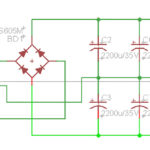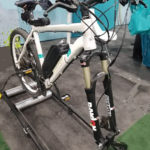You may thank Formula E electric racing technology for some of the advances that ultimately make electric vehicles practical on ordinary highways. Just as automakers have sponsored racing programs to help perfect advances in conventional automotive technology, electronics makers are taking the same approach with Formula E racers to get a jump on components for next-generation EVs.
The first season of Formula E racing had all teams using cars designed by Spark Racing Technology around a chassis from Dallara. Since the second season, regulations permit teams to use other suppliers for the electric motor, inverter, gearbox and cooling system. The chassis and battery stay the same. Comprised of 14 races that take place in 12 cities across five continents, the ABB FIA Formula-E Championship promotes three core values — energy, environment, and entertainment — and is designed to help accelerate global interest in electric vehicle technology.
The next Formula-E championship race will take place Saturday, Jan. 18, 2020, in Santiago, Chile, and the season will conclude on Sunday, July 26, 2020, in London.

Among the electronics firms working with Formula E teams is Würth Elektronik. Working with the Audi Sport ABT Schaeffler Formula E racing team, Würth supplies the car with custom-made Redcube wire and cable terminals and with other components. “We’re already working on the next coup,” explains Würth Elektronik Wireless Connectivity & Sensors VP and Formula E Technical Coordinator Oliver Opitz. “The starting signal for the joint development of the next-generation Audi e-tron FE07 has already been given: The components made by Würth Elektronik will enhance the efficiency in the high-voltage system installed in the racing cars. Also on board will be new components currently being developed by our field application engineers.”

Says Alexander Gerfer, CTO of the Würth Elektronik eiSos Group, “The Formula E circuit gives us the opportunity to put our components through their paces under extreme conditions – and of course it also benefits our customers, who ultimately draw the greatest profit from our efforts here.”
The Audi e-tron FE06 racing car has done well at the first races of this, the sixth season, in Saudi Arabia where it crossed the finish line in second and sixth positions.
Another electronics company found in the Formula E pits is AVX which partners with Mouser Electronics, TTI, Inc., and Molex to sponsor the the GEOX Dragon team. AVX supports the Formula E car with electronic components, interconnects, sensors, controls, and antenna equipment for powertrains, active body control, advanced driver assistance systems, lighting, power conversion, and drive control systems.

Says Eric Pratt, AVX senior vice president of Marketing, “Together with Mouser, TTI, and Molex, we’re making meaningful advances toward improving the performance, efficiency, and safety of all-electric vehicle technology, making it even more appealing to consumers, and propelling the automobile industry towards a greener, more sustainable future.”
“With the introduction of the Gen2 cars last season, Formula E really raised the bar on electric motorsports sustainability and performance,” said Todd McAtee, vice president, Americas Business Development for Mouser Electronics. “We are excited to team up with Molex and TTI, along with AVX, to sponsor GEOX DRAGON and to promote these innovative technologies.”
ROHM Semiconductor provides SiC technology for Formula E for vehicle components that include the main inverter, dc/dc converter, on-board charger, and electric compressor. Inverters for the Venturi Formula E team have been designed around ROHM SiC semiconductors mainly as a way to save space and lighten up the car. For example, Rohm SiC-based inverters used in past seasons have been several kilograms lighter and have occupied about a third less volume than their all-silicon counterparts.







Leave a Reply